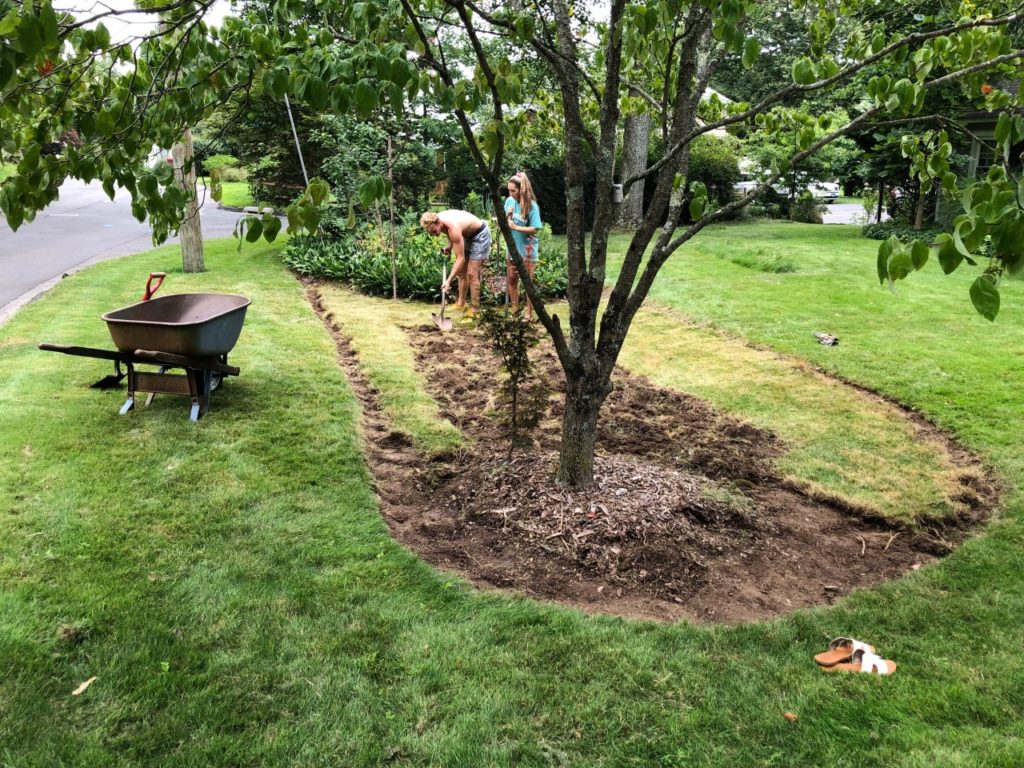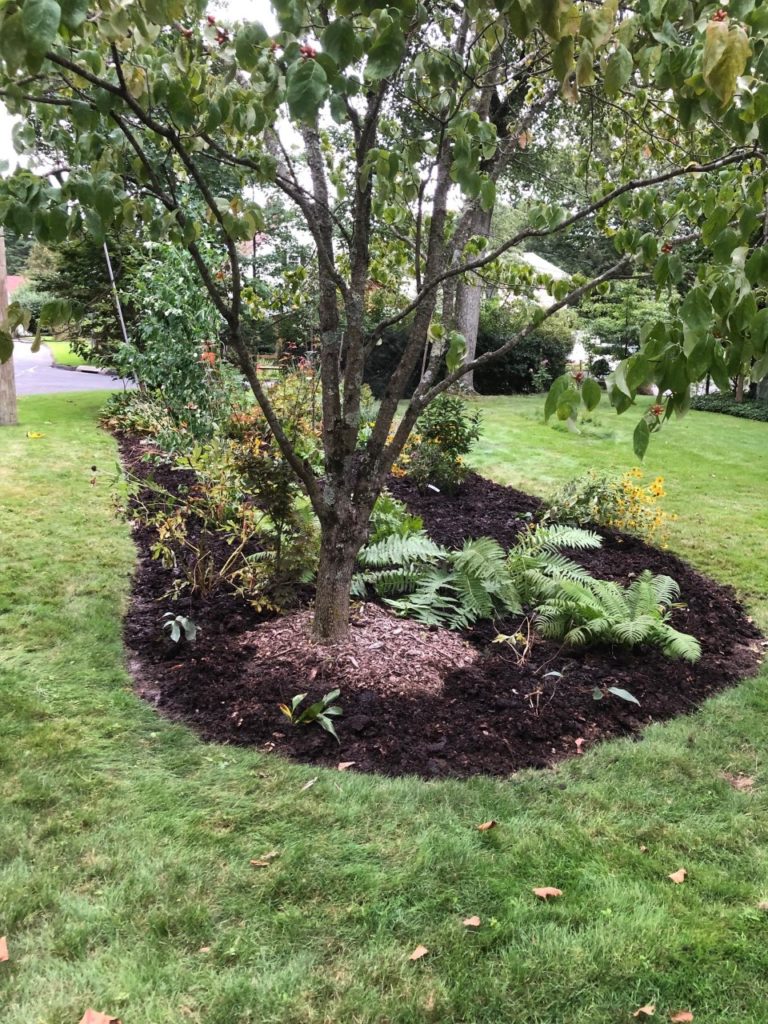by Scott Smith
For many people, gardening is a meditative, almost solitary pastime. That’s all well and good, as numerous studies have shown that the rewards of working productively in the garden include improved mental health. Not only is gardening a great way to get some exercise and fresh air but it also increases self-esteem, reduces stress and anxiety (not to mention time on technology), and encourages healthy, plant-based eating.
Psychologist Seth Gillihan highlighted two other attributes of gardening in a podcast with Joe Lamp’l, host and executive producer of the PBS show “Growing a Greener World” and creator of joe gardener, an online guide to organic garden resources: “Few things boost our well-being like good relationships, and gardening offers ample opportunities to connect with others,” said Gillihan. “Gardening provides a connection not just to other people but to our world.”

“”It’s a collective effort,” Lamp’l added, “and we’re all better together when we share our experiences. We all have an innate connection to the earth, and that connection manifests itself when we consume what came from the ground.”
These considerations of being both more mindful and more connected with others came into play recently as I embarked on a fall gardening project: removing a section of grass lawn in the front yard to create a larger flower garden stocked with plants for pollinators, birds and other wildlife. The cooler weather of fall is a fine time to plant small trees, shrubs and perennials so they can establish themselves before winter and be primed for strong growth come spring.
With more rainfall and fewer weeds and pests to contend with, fall is also ideal for dividing or transplanting existing plants in your garden, I read on directnativeplants.com. “Since plants are going dormant, they aren’t using energy aboveground. Moving or dividing plants in the fall when they don’t have to focus their energy both above and below ground is far less stressful than doing so in the spring or summer.”
I was inspired to create this new attraction for wild bees, butterflies and other animals threatened by habitat loss and wanton use of pesticides by two unrelated but overlapping ecological movements, each based on fostering community connections among gardeners and the living things they nurture: The Pollinator Pathways project and the Homegrown National Park initiative.
Conceived in 2007 by Seattle-based designer Sarah Bergmann, Pollinator Pathways is a participatory ecology initiative that encourages public and private properties to restore or create pesticide-free plant habitats for pollinators. The idea is to establish enough safe and nutritious places for bees, butterflies, hummingbirds and other pollinating insects and wildlife to rest, eat and breed. Grown close enough together (native bees have a range of about 750 meters) and near larger parks and preserves, Pollinator Pathways will “defragment” the urban/suburban environment so it will be able to support sustainable populations of wildlife.
With Homegrown National Park, noted eco-author Douglas W. Tallamy (Nature’s Best Hope, Bringing Nature Home) has even more ambitious plans. He aims to transform the everyday landscape familiar to most Americans by repurposing half of America’s vast lawnscape for ecologically productive use. Tallamy, an entomologist by training, argues that we can no longer rely on national parks and other “wild” places to sustain a viable ecosystem. He notes that there are 40 million acres of cultivated grass in the U.S., much of it laced with herbicides and pesticides and about as useful to a pollinator as a parking lot.

Tallamy says that if half of all that wasteful turf could be replaced by more pollinator-friendly gardens and greenscapes, a functioning network of habitat the size of 10 Yellowstones could be achieved by untrained citizens with minimal expense and without any costly changes to infrastructure.
So that’s how I came to be standing in the front yard, spade in hand, to rethink my lawn and turn a sizable chunk of it into a new garden bed, adding plenty of flowers and curb appeal along the way. My house in southern Connecticut sits on a corner lot. At the corner I already have a small oval patch of plantings, mostly ferns and lilies of the valley, with a young tulip poplar and red oak growing at one end and a small apple tree at the other. Ten paces across a rather motley lawn grows a fine dogwood tree, near the driveway. My plan is to connect these garden islands by removing the turf between, a patch about 25 feet long and 10 feet deep, leaving a 10-foot-wide strip of grass along the street for the neighborhood dogs and their walkers.
I’m lucky to have a college-age son who, with his girlfriend helped, turn the sod over, grass side down. A flat spade or mattock works best if you want to remove the turfgrass entirely; renting a sod cutter can be a big labor (and back) saver, too. If you have more time, or intend to plant in the spring, you can also lay old newspapers, cardboard or mulch over the area now to make digging next season much easier.
I’m also fortunate to have a sizable heap of compost in the backyard that’s ready to be spread as a top-dressing across the new garden bed. Begun last fall with the harvest of autumn leaves and tossed and turned over the past few months with food waste from my kitchen and the neighbors, spent coffee grounds from Starbucks’ free “Grounds for the Garden” program and other “green” additions, this thick layer of what agronomists call “living soil” will help keep weeds down, retain moisture and give measured amounts of essential nutrients and minerals to the tender plants.
My backyard is also a ready-made source for perennials to transplant. The purple coneflowers and black-eyed susans have grown so well in the small fenced-in garden I keep next to the back patio that they’re beginning to crowd out the vegetables. Better yet, they are free for the taking, as are some ferns I’ve moved from a shady but cramped spot in the backyard to underneath the dogwood. And last weekend I stopped by the annual sale of native plants hosted by a local conservation group to buy a tray of pollinator-friendly milkweed as well as a young winterberry bush, whose bright red berries provide food for birds deep into winter. The organization, Aspetuck Land Trust, also has its own Green Corridor Partners initiative, which invites area gardeners to join the community effort to plant native plants, switch to organic or zero-emissions lawn care services, and stop using pesticides.
While my newly planted pollinator garden won’t be strictly native – I also transplanted two small rose of Sharon trees growing too closely to a redbud tree thriving along the side of the yard – it will be pesticide free. That’s another instance where collective action is vital – use a pesticide on one property and the toxins impact pollinators throughout the neighborhood and all too often leach into surrounding waterways. Local advocacy groups are marshalling forces on this front, as well. Here in Connecticut, Pesticide Free Rowayton, a Friends of Animals project, helped pass a ban on pesticide use on public property, a campaign that is spreading to other towns, among them nearby Stamford. To learn more about how to bring such grass-roots efforts to your community, visit the Beyond Pesticides website.
While my new pollinator garden won’t be in full bloom until late next spring, I take heart that by rethinking the lawn this fall I’m adding my modest suburban yard to the urgently needed mass effort to protect biodiversity, reduce the use of deadly chemicals like glyphosate-based herbicides and neonicotinoid insecticides and even take a small step toward combatting the climate crisis. Whether your greenspace extends only to potted plants on the patio or you have enough grass to mow with a tractor, you can be part of the solution, too. And you won’t be alone!

